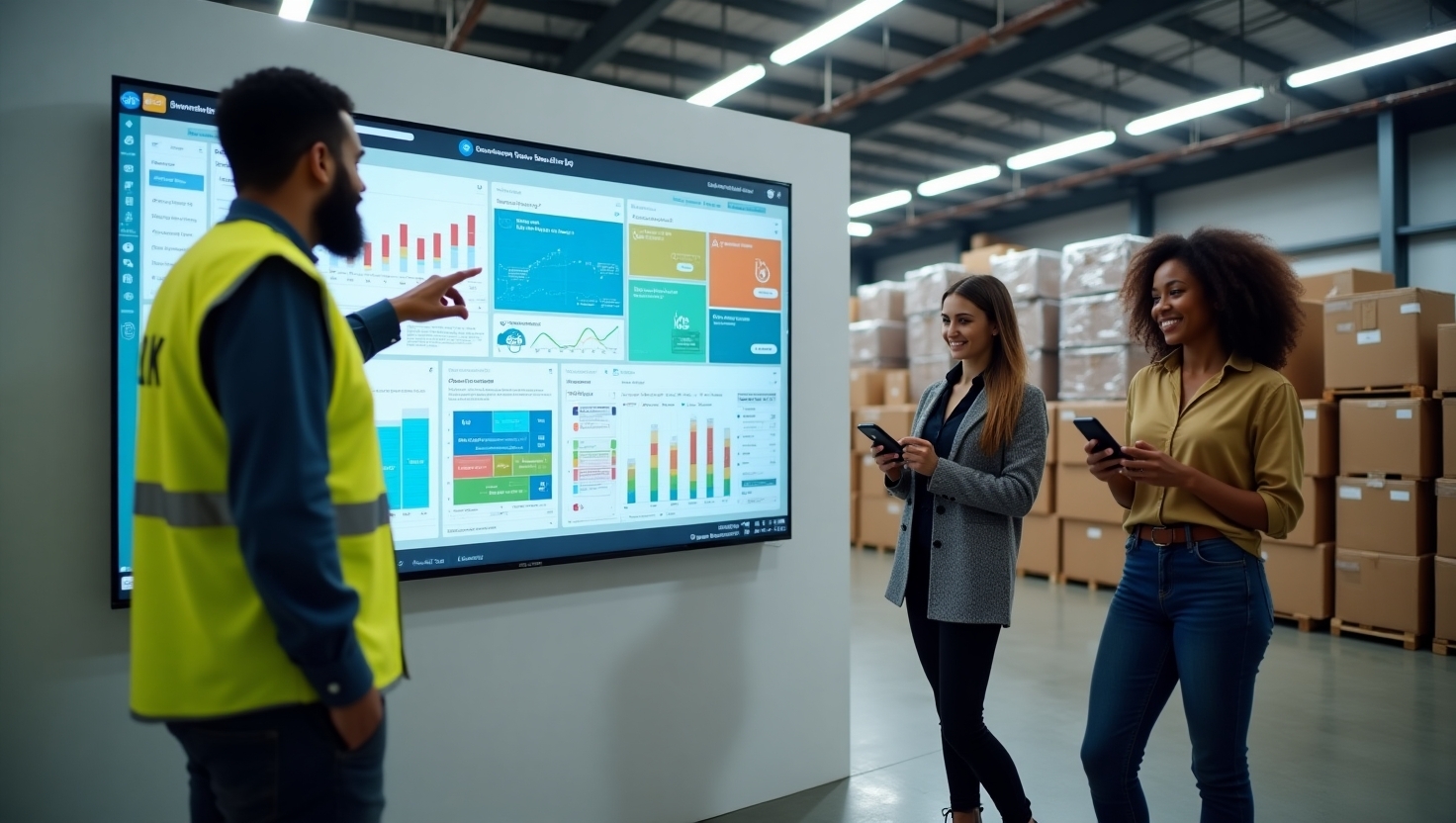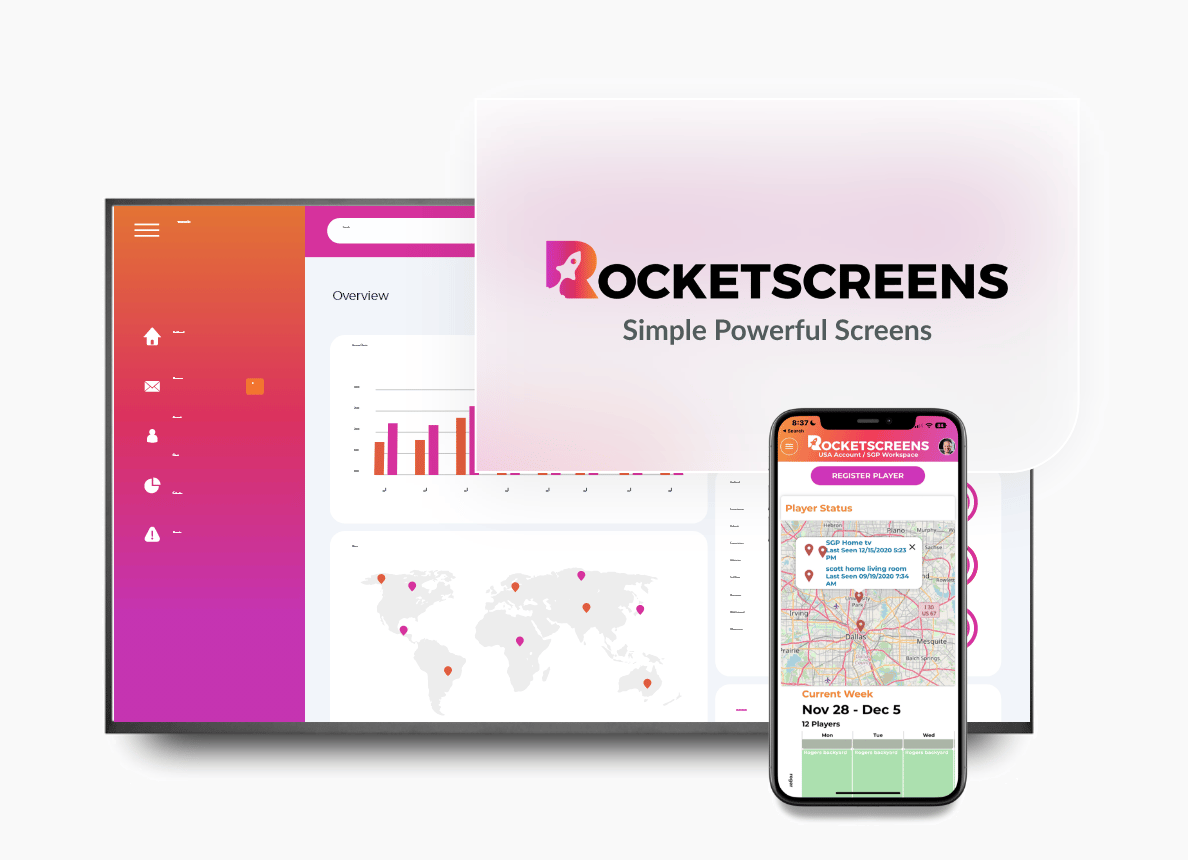
In the fast-paced world of logistics, information is the new currency. The ability to access, analyze, and act on real-time data is no longer a luxury, it's a fundamental requirement for survival and growth. This is where Power BI, Microsoft's powerful business intelligence tool, offers logistics companies a robust platform to transform their data into actionable insights. When combined with the widespread visibility of digital signage, Power BI becomes a potent tool for driving efficiency, fostering collaboration, and creating a truly agile supply chain.
For logistics professionals, the daily grind is a whirlwind of managing inventory, coordinating shipments, and navigating unforeseen disruptions. Traditional methods of data analysis, often reliant on static spreadsheets and delayed reports, are no longer sufficient to keep pace with the demands of the modern supply chain. This is where the dynamic and interactive nature of Power BI dashboards comes to the fore.
The Pressing Need for Real-Time Data in Logistics
The logistics industry operates on a knife's edge, where even minor delays or inefficiencies can have a cascading effect, leading to increased costs, dissatisfied customers, and a tarnished reputation. The lack of real-time visibility into key performance indicators (KPIs) is a significant pain point for many logistics companies. Imagine a warehouse manager unaware of a critical inventory shortage until it's too late, or a fleet manager unable to react to a sudden traffic jam, causing a cascade of delivery delays.
These scenarios are not just hypothetical; they are the daily reality for many businesses. The inability to access and act on live data creates a reactive environment where teams are constantly fighting fires instead of proactively managing their operations. This is the critical gap that Power BI and digital signage integration seeks to fill.
Harnessing the Power of Power BI for Logistics Operations
Power BI offers a comprehensive suite of tools that enable logistics companies to connect to a wide array of data sources, from enterprise resource planning (ERP) systems and warehouse management systems (WMS) to GPS and telematics data. This data can then be transformed into intuitive and interactive dashboards that provide a 360-degree view of the entire logistics lifecycle.
Key Applications of Power BI in Logistics:
- Enhanced Supply Chain Visibility: Gain a holistic view of your supply chain, from procurement to final delivery. Track shipments in real-time, monitor inventory levels across multiple locations, and identify potential bottlenecks before they escalate.
- Optimized Route Planning and Fleet Management: Integrate GPS and telematics data to monitor vehicle locations, analyze driver performance, and optimize delivery routes. By factoring in real-time traffic and weather conditions, you can significantly reduce fuel costs and improve on-time delivery rates.
- Intelligent Inventory Management: Move beyond simple stock counts with predictive analytics. Power BI can help you forecast demand, identify slow-moving or obsolete inventory, and set automated reorder points to prevent stockouts and reduce carrying costs.
- Comprehensive Cost Analysis: Drill down into your operational costs to identify areas for improvement. Analyze fuel consumption, labor costs, and maintenance expenses to make data-driven decisions that boost your bottom line.
- Improved Warehouse Efficiency: Visualize warehouse layouts and workflows to identify areas of congestion and inefficiency. Monitor order picking and packing times, track equipment utilization, and optimize storage space for a smoother, more productive operation.
From Insight to Action: The Role of Digital Signage in Logistics
While Power BI provides the critical insights, digital signage acts as the crucial bridge, delivering this information to the right people at the right time. In a bustling warehouse or a busy distribution center, not everyone has access to a computer. Digital signage screens, strategically placed in high-traffic areas, ensure that your entire team, from forklift operators to loading dock personnel, is aligned and informed.
Imagine a large screen on the warehouse floor displaying real-time order fulfillment rates, highlighting any delays, and celebrating team achievements. This constant stream of information fosters a sense of shared purpose and empowers employees to take ownership of their performance.
The Undeniable Benefits of Integrating Power BI with Digital Signage:
- Empowering the Frontline: Provide your non-desk workforce with the data they need to make informed decisions in real-time. This fosters a more proactive and engaged team, leading to improved productivity and fewer errors.
- Breaking Down Communication Silos: Ensure that everyone in your organization is working from the same playbook. By displaying key metrics across departments, you can improve collaboration between your warehouse, transportation, and customer service teams.
- Driving a Culture of Performance: Publicly displaying KPIs can create a healthy sense of competition and encourage teams to strive for continuous improvement. Recognizing achievements on a public forum can also be a powerful motivator.
- Enhancing Safety and Compliance: Use digital signage to display safety reminders, emergency procedures, and compliance updates. This constant visual reinforcement helps to create a safer working environment and ensures that everyone is aware of important protocols.
Making the Connection: How to Display Power BI on Your Digital Signage
Integrating Power BI with your digital signage network is a straightforward process with platforms like RocketScreens. The key is to establish a secure and reliable connection that allows for the real-time streaming of your dashboards.
Platforms like RocketScreens offer dedicated Power BI integrations, enabling you to securely connect your Power BI account and select the specific reports and dashboards you want to display. This eliminates the need for insecure public URLs or complex manual setups.
Real-World Success: The Impact of Power BI and Digital Signage in Action
While the theoretical benefits are compelling, the true power of this integration is best illustrated through real-world examples. A leading third-party logistics (3PL) provider was struggling with inefficient warehouse operations, leading to frequent shipping errors and customer complaints. By implementing Power BI dashboards displayed on large screens throughout their warehouse, they were able to provide their team with real-time insights into order accuracy, picking times, and inventory levels. The results were striking: a 25% reduction in shipping errors and a 15% improvement in on-time delivery within the first six months.
In another instance, a large distribution company used Power BI and digital signage to optimize their fleet management. By displaying real-time fuel consumption data and highlighting instances of excessive idling, they were able to foster a more fuel-conscious driving culture. This simple initiative led to a 10% reduction in fuel costs across their entire fleet.
Overcoming the Hurdles: Challenges and Solutions in Implementation
While the benefits are clear, it's important to acknowledge the potential challenges in implementing a Power BI and digital signage solution.
- Data Quality and Integration: The old adage of "garbage in, garbage out" holds true. Ensuring the accuracy and consistency of your data from various sources is paramount. A phased approach, starting with a few key data sources and gradually expanding, can help to manage this complexity.
- User Adoption and Training: Simply displaying data is not enough. It's crucial to train your team on how to interpret the information and use it to make better decisions. Creating intuitive and easy-to-understand dashboards is key to driving user adoption.
- Choosing the Right Digital Signage Platform: Not all digital signage solutions are created equal. It's essential to select a platform that offers robust and secure integration with Power BI, as well as the flexibility to display a variety of content.
Why RocketScreens is Your Ideal Partner for Power BI Integration
RocketScreens is designed to make the process of displaying your Power BI dashboards on any screen simple and secure. With our seamless Power BI integration, you can connect your account in minutes and start streaming your real-time data to your digital signage network. Our platform allows you to:
- Securely connect to your Power BI account without the need for public URLs.
- Display a wide range of content alongside your Power BI dashboards, including safety videos, company announcements, and social media feeds.
- Easily manage your content from a centralized, user-friendly interface.
- Schedule content to ensure that the right information is displayed at the right time.
By providing a reliable and easy-to-use platform, RocketScreens empowers you to unlock the full potential of your Power BI data and transform your logistics operations.
The integration of Power BI and digital signage is more than just a technological upgrade; it's a strategic move that can fundamentally change the way your logistics company operates.
By providing your entire team with access to real-time, actionable data, you can foster a culture of efficiency, collaboration, and continuous improvement. In an industry where every second and every dollar counts, can you afford to be left behind?





